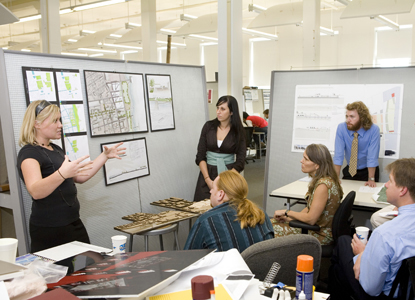There is a good reason why many architects feel under-appreciated in their field when there is competition slashing the money they stand to make and that is that the education of an architect can be as extensive as any doctor or lawyer, but without the monetary perks at the end. Architectural education is deeply involved and can take anywhere from five to seven years or more, depending on the path that the architect took to get that education and how involved they could be with their education.
There are actually five ways of getting a degree in architecture and it is here where many have to begin making their choices. The routes depend on the schools that you interested in joining; some offer only the four year bachelor of architecture that is not the professional degree at all, but just the education.
Students going this route typically take a year or two off in between to work in what they can in the field before going back for their Masters of Architecture or changing their minds to do something else altogether. Unlike other degrees, such as political science, a Masters of Architecture is generally required in order to get any real work since it is a professionally accredited degree.
The second route is the bachelor of architecture that takes five years to complete (minimum) and is an all or nothing route in that it completely immerses the student into architecture and nothing else, so students better be certain that this is a field of work they want.
The third route is a continuation of the first-that is, students who already have a degree, usually in architecture, go on to finish it; either with a Masters of architecture or a full bachelor’s of architecture. This adds another two to three years to your education, bringing the total to between six and seven or more.
The fourth route is mostly for mature students who return to pursue a professional degree in architecture after doing something else. Route five goes all the way, with students gaining a PhD in architecture, suitable for teaching and this adds another one to two years to the five to seven it took to get the M.Arch in the first place.

The other difficulty comes of the fact that while there are about a hundred schools in America which offer architecture programs, there is no consistency, so students who want more than a basic degree often has to bounce around schools to finish up. The names of courses and degrees change from school to school, sowing further confusion.
Although the National Architectural Accrediting Board has to accredit the programs and schools that offer architecture, there is still little consistency in what courses are what and how a student is to go about getting something useful out of their time. However, all architects do learn a set of skills which go by all different names, but turn out roughly alike.
Students learn different styles of drawing-free, constructed, presentation and analysis-they will learn how to design buildings with good acoustics and lighting, as well as structure and form; and they learn how to use a design studio, both with computers and without. Students learn about the different materials and components that go into a building and how they affect the finished product.
They also have to learn about environmental conditions that will affect their work such as heat and cold and moisture. Students also have to know history and theory behind architecture-this can be a broad range of topics, including the histories of all different civilizations of architecture, though no school offers all of them, so students have to specialize.
Finally, in our modern age, students have to be well acquainted with Computer Assisted Design (CAD) because employers greatly prefer students who are fluent with computer graphic design in architecture than those without. Students also take a number of electives to fill out their knowledge such as geography and politics, or whatever else they think might be useful to them.
All of this is of course expensive as all schooling is and requires a great deal of commitment on the part of the student. It is no wonder therefore, that at the end of seven or more years, a student feels slightly gypped when he has trouble finding work that pays a decent amount of money. However, others are quite happy merely going through the education, for a degree in architecture is challenging, stimulating, creative, and enjoyable to the students. And if architecture is your passion, the education you receive will merely deepen your enjoyment of the field and you will be able to take a great deal out of it that will make it well worth the time and money spent in the endeavor.

G+


